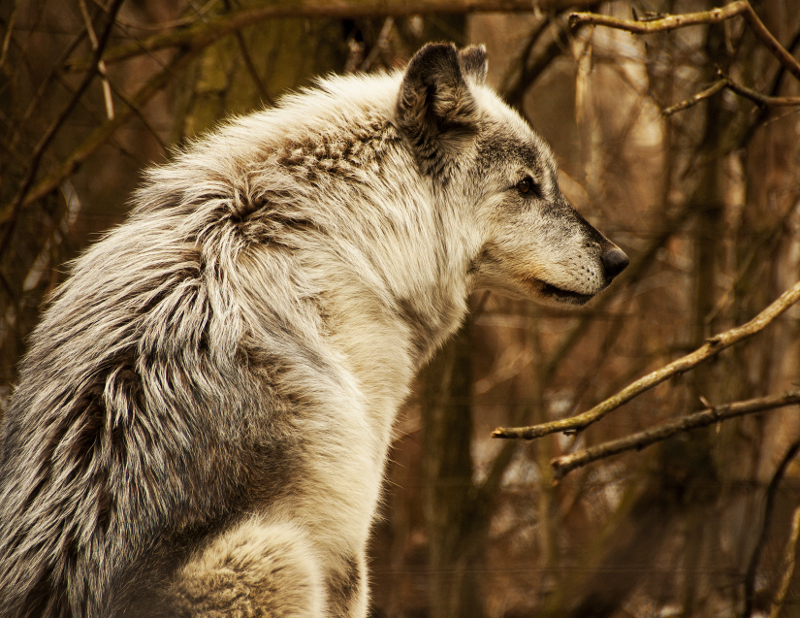News
Carnivore hunting policy does not always align with science: a new paper published in the journal Science concludes that policies regulating the hunting of large carnivores do not always align with basic scientific data
David Macdonald comments on one example ‘Current policies for wolf hunting in the Northern Rockies do not specify a target population size, a maximum number killed or a desired rate of population growth. Beyond avoiding a decline that would provoke re-listing under the Endangered Species Act, the goals of current policy are not clearly defined.’
The team of authors, including two current members of WildCRU and led by Scott Creel, a former visitor to WildCRU and now at Montana State University, includes scientists with decades of experience studying wolves, lions, African wild dogs, tigers, dingoes and sharks. Our team found that current harvest levels for the recently de-listed population of grey wolves in the Northern Rocky Mountains of the United States have led to decreased survival and reproduction, smaller packs, social disruption and a reversal from population growth to decline.
Lead author Scott Creel noted: ‘Current policies state that half of a wolf population can be shot annually without causing the population to decline. On the basis of ecological theory, this suggestion is not likely to be correct for the wolf, or indeed for any large carnivore.’ Dennis Murray of Trent University, a co-author with extensive experience analysing the demography of wolves, explained: ‘A population’s growth rate is the sum of individual rates of survival and reproduction, and data show that current policies regulating wolf hunting have caused both to decline substantially.’
We examined policies regulating hunting within the Northern Rocky Mountain population of wolves using government data on the size and demography of recovering wolf populations. By analyzing population counts, sources of mortality, and harvest rates, we report that current levels of harvest exceed potential population gains, and as a consequence have caused the wolf population within the original recovery area to decline.
Our paper emphasises that many large carnivore populations are managed sustainably, including the use of regulated hunting, but that current harvest rates and related policies for western US wolves are not sustainable. Scott Creel concluded: ‘It is a bit surprising for the US Fish and Wildlife Service to conclude that “no risks were identified” for these populations, despite data showing decreased survival, reproduction and population size at the level of entire states.’
Among several recommendations, the paper notes that some apparent population increases appear to be the result of changes in methods of accounting and increased effort to count wolves. Ullas Karanth of the Wildlife Conservation Society, a co-author, noted for advancing methods to count large carnivores, said: ‘Studies on many large carnivores, including tigers, wolves and lions, emphasise that population surveys must account for detection probability and sampling effort if they are to generate valid estimates.’
The analysis also suggests that policies regulating carnivore hunting would benefit from more attention to the distinction between populations that are locally stable and those that are maintained only by immigrants from other areas. Andrew Loveridge of WildCRU makes an important point regarding lions: ‘With lions, for example, we have found that hunting in one area can create a “vacuum effect” that draws lions out of adjacent areas. This movement and social disruption can have a strong effect on a population’s growth or decline.’
Although these controversies about policy for wolf hunting in the western United States are surprising, they may be rooted in the long and complicated history this species has had in the region. In most western states, there exists strong public pressure for legal harvest of wolves.
Scott said: ‘The North American model of wildlife management works very well for species like ducks or elk, but becomes much more complex for species like wolves that compete with hunters. The management agencies involved have a difficult task, but current data suggest that more attention to the consequences of hunting large carnivores is warranted.’
Although wolf populations are harvested sustainably in several other jurisdictions in North America, the findings our study lead us to call for revisions and clarifications to policies in the Northern Rocky Mountains, where the wolf population faces ecological and societal challenges that are likely to limit its recovery.
Creel, S., Becker, M., Christianson, D., Dröge, E., Hammerschlag, N., Haward, M.W., Karanth, U., Loveridge, A., Macdonald, D.W., Wigganson, M., M’soka, J., Murray, D, Rosenblatt, E, Schuette, P. (2015) Questionable policy for large carnivore hunting. Science. DOI: 10.1126/science.aac4768
-
 Grey wolf, copyright Dana Taramina Bear Creek Exotic Wildlife Sanctuary
Grey wolf, copyright Dana Taramina Bear Creek Exotic Wildlife Sanctuary






